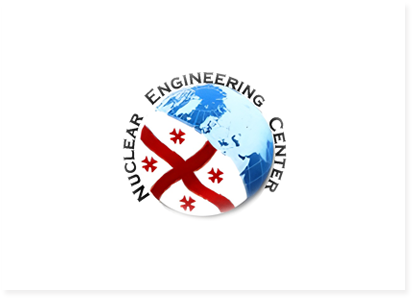Georgian Technical University and ATLAS experiment has signed agreement for continuation of collaborative project that has been going on since 2010. New agreement will last for 1 year till the end of 2018. Georgian Team will work on 3 working packages.
WP1: “Checking G4 baseline geometry for Integration conflicts and Conformity with as-built geometry”
Some analyses are showing substantial discrepancies between real data and simulation. The purpose of this working package is to investigate if the differences are caused by an inappropriate geometry representation in Geant4 compared to the design geometry available in CATIA. In case of significant disagreement the geometry used for simulation will be modified accordingly. The realization of the task by the Georgian team comprises the implementation of the CATIA geometry based on SmarTeam information and CDD drawings. Furthermore the team will compare the simulation geometry with CATIA and report the results in suitable meetings. For this step the unique simulation loop on the CATIA platform developed by the Georgian team in cooperation with the ATLAS simulation team will be used. The critical detector regions for which differences in the geometry could introduce MC/data discrepancies will be assessed and prioritized by the ATLAS simulation group. As well a collaboration with the Muon Combined Performance group is envisioned for the first time, as their studies of cavern background hits could identify such detector regions, too.
Manpower in Georgian Team: 1.5FTE /CATIA designers, programmers
ATLAS contact person: Dr Jochen MEYER
WP2: “Adding New Volumes in Geant4 Baseline Geometry”
There are several regions of the geometry used in the Geant4 simulation where volumes representing service and support structures are missing. The efforts carried out as part of this working package include the implementation of these volumes. Moreover, volumes representing structures which undergo modifications during the detector upgrade will be changed correspondingly. The main objective is to establish a smooth work flow from design engineers up to the ATLAS simulation team. The design geometry will be extracted from the engineering database and implemented into CATIA by adding absent drawings. Subsequently the derived 3D model will be simplified while paying special attention to preserving the initial volume and weight. A transfer into XML will be performed. This result is sent to the simulation team for an eventual incorporation into the simulation geometry. During the process the unique simulation loop developed by the Georgian team in cooperation with the ATLAS simulation team will be used. All detector systems will be considered in these studies, starting from the muon spectrometer extending to the calorimeter and even the inner detector.
Manpower in Georgian Team: 1.5FTE /CATIA designers, programmers
ATLAS contact person: Dr John CHAPMAN
WP3: “Improve ATLAS software quality”
The purpose of this working package is to promote software quality evaluation as an integral part of the ATLAS software development process. This will require the development of tools and practices in two key areas.
Firstly, we will provide a robust defect checking service of all the main ATLAS offline development branches. Software quality tools such as Coverity and cppcheck are currently run infrequently over just the single master development branch. We therefore we attend to deploy a framework to ensure these tools are run at regular intervals and to respond to any issues with maintaining the ongoing service. Where appropriate we will provide expertise to assist software quality coordinators with defect triage and resolution.
Secondly, recent wholesale changes to the ATLAS software build infrastructure have provided an ideal opportunity to apply software quality evaluation as an integral part of the development workflow. The framework can be leveraged to include the primitive checking of code defects (i.e. before code is introduced into the development branches) by the addition of software quality tests within the new Continuous Integration (CI) test chain.
Early feasibility testing in this area by the Georgian team together with the ATLAS software coordinators motivated the construction of a test development environment hosted at multiple locations and isolated from the operational build infrastructure. The use of Docker containers enabled the rapid emulation of key services used in the build infrastructure thereby creating a sandbox to develop new CI tests and to explore how to interpret and report software quality test results. We anticipate further development of the workflow and will explore approaches to accommodate results gathering and comparison from other software quality tools.
Furthermore, we intend to continue developing software quality CI tests for more comprehensive defect checking coverage. A deployment pipeline has recently been established with the ATLAS Software Infrastructure Team to allow our development effort to be validated and then included onto the production software build infrastructure. This will allow us to gather experience from code review shifters and developers to help optimise our testing coverage and results presentation.
We will also build upon preliminary studies into methods to promote defect resolution action through code reviewer-led triage and in harnessing results from trend analysis on generated code quality indicators as part of an overall software quality evaluation strategy.
Manpower in Georgian Team: 1FTE / C++ developer
ATLAS contact persons: Dr Walter LAMPL and Dr Andrew WASHBROOK





 Visit Today : 147
Visit Today : 147 Visit Yesterday : 122
Visit Yesterday : 122 This Month : 4059
This Month : 4059 This Year : 28377
This Year : 28377





